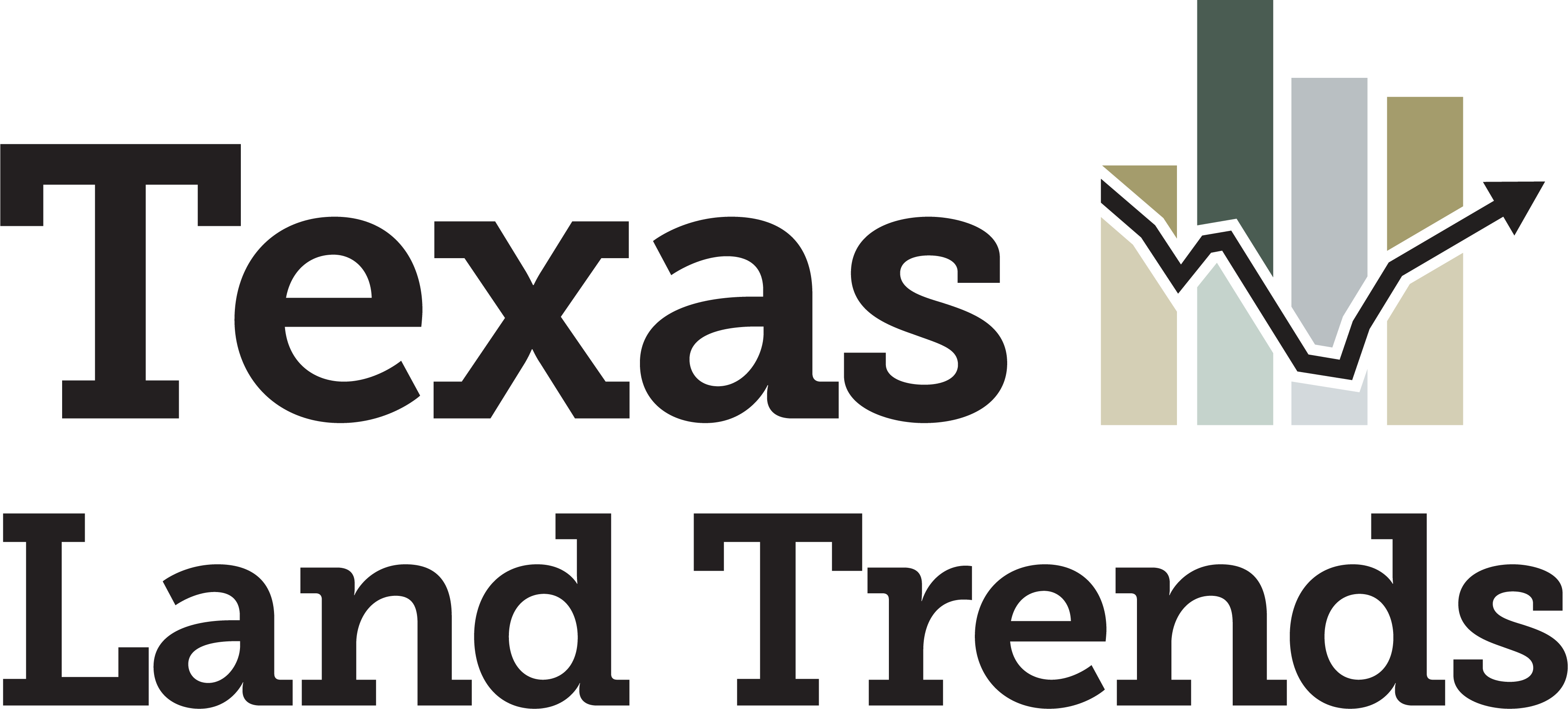About the Data
Suggested Citation
When utilizing our data for publication/presentation purposes, please use the following citation:
Data Sources and Analysis
Source: USDA Census of Agriculture
United States Department of Agriculture (USDA). National Agricultural Statistics Service (NASS) Survey Data. Retrieved from quickstats.nass.usda.gov
Ownership Size Data — Acres of farms and number of farms collected at the county level, by size class (small <100 acres, medium 100 – 2,000 acres, large 2,000+ acres).
Source: United States Census Bureau and Texas Demographic Center
Census population and intercensal estimates. Retrieved from: https://www2.census.gov/programs-surveys/popest/
Texas Demographic Center estimates and projections. Retrieved from: https://demographics.texas.gov/Estimates/2023/
Population Data – Census values for census years (every 10 years) and estimates for intercensal years collected at the county level.
Source: Texas Comptroller of Public Accounts
Agricultural, Timberland, and Wildlife Management Use Special Appraisal. Location: Property Tax Assistance Division.
Land Use Data — land use (acres) collected at the ISD (independent school district) level
|
Comptroller Categories |
Our Categories described as Working Lands |
|
|
Native Rangeland |
Grazing Lands |
|
|
Irrigated Cropland |
Cropland |
|
|
Timber |
Timber |
|
|
Wildlife Management |
Wildlife Management |
|
|
Orchards Other |
Other |
*Comptroller categories were grouped to reduce fluctuation between comptroller-defined classifications
Land Value Data — land value ($/acre) by land use collected at the ISD (independent school district) level
Market value-the value of the land
Production value-the value of the agricultural commodities produced by the land
Notes:
- Comptroller data were statistically adjusted to remove outliers.
- Values for ISDs that no longer exist due to a consolidation were retroactively assigned to the new ISD.
- County level land use and land value metrics are made up of an aggregation of all independent school districts whose center points fall within the selected county boundary. Because of this, it is likely that total land use area will exceed the actual are of the county itself.
Texas Regions of Interest
Includes pre-selected counties for particular regions of interest across the state:
- I-35 – Counties surrounding Interstate 35 from San Antonio to Austin: Bexar, Comal, Hays, Kendall, Travis, Williamson Counties.
- Coastal – All counties with Gulf of Mexico coastline: Aransas, Brazoria, Calhoun, Cameron, Chambers, Galveston, Harris, Jackson, Jefferson, Kenedy, Kleberg, Matagorda, Nueces, Orange, Refugio, San Patricio, Victoria, Willacy Counties.
- Hill Country – Counties designated as part of the Hill Country by the Hill Country Alliance: Bandera, Bexar, Blanco, Burnet, Comal, Edwards, Gillespie, Hays, Kendall, Kerr, Kimble, Llano, Mason, Medina, Real, Travis, Uvalde Counties.
- DFW – Tarrant/Dallas counties and adjacent counties making up the Dallas/Fort Worth metropolitan area: Collin, Dallas, Denton, Ellis, Hood, Johnson, Kaufman, Parker, Rockwall, Tarrant, Wise Counties.
- Houston – Harris County and adjacent counties making up the greater Houston metropolitan area: Brazoria, Chambers, Fort Bend, Galveston, Harris, Liberty, Montgomery, Waller Counties.
- Rio – Hidalgo and Cameron counties.
Data Discrepancies
The USDA NASS Census of Agriculture ownership data set reports working lands as the number of farms and acres of farms by size class each census year (1997, 2002, 2007, 2012, and 2017, 2022) for every county in Texas. The Ag Census defines farms/ranches as any property from which $1,000 or more of agricultural products were produced, sold, or normally would have been sold, during the census year and is ultimately a voluntary census aiming to provide valuable information on land use and ownership, operator characteristics, production practices, income, and expenditures of American farms and ranches. NASS conducts capture-recapture methodology to account for under coverage, nonresponse, and misclassification.
The Texas Comptroller of Public Accounts (Texas Property Tax Assistance Division) produces an annual compilation of land use and land value data from all ISDs. This data set represents all private lands designated as 1-D and 1-D-1 appraisal status for all Texas ISDs. A 1-D agricultural use (Assessments of Lands Designated for Agricultural Use) status refers to lands devoted to full time agricultural operations where the owner’s primary occupation and source of income is derived from agricultural enterprises. In contrast, a 1-D-1 open space status (Taxation of Certain Open Space Land) designates lands based solely on the primary use of the land with no consideration for the landowner’s income or occupation. In this report, we aim to quantify changes in working lands (private lands under 1-D and 1-D-1 appraisal status) over time.
Due to its voluntary nature and statistical adjustments thereafter, the Ag Census dataset does not exactly align with land use data reported by the Texas Comptroller. Total acres of farms reported by the Ag Census (126M acres) are historically lower than total reported acres of working lands by the Comptroller (141M acres). The Texas Land Trends program uses the Ag Census to further define and illustrate ownership patterns and landowner demographics across the state, and uses the total acreages reported by the Comptroller to define working lands and land uses in Texas.

